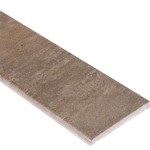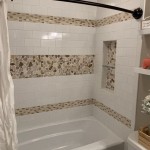How to Replace Broken Tile in a Shower Floor in Singapore: Costs Per Square Meter
A broken tile in your shower floor can be a frustrating and potentially dangerous issue. Not only is it unsightly, but it can also lead to a slippery surface, increasing the risk of falls. Fortunately, replacing broken shower floor tiles is a relatively straightforward DIY project, especially for homeowners with basic DIY skills. This article will guide you through the process of replacing broken tiles in your Singapore shower floor, including the estimated costs per square meter.
1. Assessing the Damage and Gathering Materials
The first step is to assess the extent of the damage and gather the necessary materials. Carefully inspect the broken tile and the surrounding area. Determine if the damage is isolated to the surface of the tile or if the underlying mortar bed is also damaged. If the mortar bed is cracked or loose, you will need to repair it before installing a new tile.
Here are the materials you will need for the job:
- New shower floor tile (matching existing tile or a new design)
- Tile adhesive (thin-set mortar)
- Grout (matching existing grout color)
- Tile spacers
- Chisel and hammer
- Bucket and sponge
- Safety goggles
- Gloves
- Dust mask
- Kneeling pad
- Utility knife
- Grout float
- Grout sponge
It's always recommended to purchase extra tile to accommodate potential cutting errors or future repairs. You might also need to purchase additional materials to repair the mortar bed if necessary.
2. Removing the Broken Tile
Once you have the necessary materials, you can begin removing the broken tile. This process involves carefully removing the damaged tile without causing further damage to the surrounding area.
Here are the steps to remove the broken tile:
- Protect your surrounding area by covering it with plastic sheeting or dropcloths to prevent dust and debris. Wear safety goggles, gloves, and a dust mask for protection.
- Use a chisel and hammer to carefully break the broken tile into smaller pieces. Aim for the center of the tile to avoid hitting the surrounding tile.
- Remove the broken tile pieces and any loose mortar debris. Be careful not to damage the surrounding mortar bed.
- If the mortar bed is damaged, use a chisel and hammer to remove the damaged mortar.
- Clean the area thoroughly to remove any dust and debris.
3. Preparing the Area and Installing the New Tile
After removing the broken tile, you need to prepare the area before installing the new tile. This involves cleaning the surface and applying a thin layer of tile adhesive.
Here are the steps to prepare the area and install the new tile:
- Clean the area thoroughly using a damp cloth or sponge. Make sure there are no loose debris or dirt that can affect the adhesive.
- Apply a thin layer of tile adhesive to the area where the new tile will be installed using a trowel. Ensure the adhesive is evenly spread and the depth is consistent.
- Carefully place the new tile on the adhesive, ensuring that it is level and flush with the surrounding tiles.
- Use tile spacers to ensure that the tiles have even gaps between them.
- Press the tile firmly into the adhesive to ensure a strong bond.
- Wipe away any excess adhesive with a damp cloth.
- Allow the adhesive to dry completely before proceeding to the next step.
4. Grouting and Finishing Touches
Once the adhesive has dried completely, you can apply grout to fill the gaps between the tiles. Grouting is essential for sealing the tiles and creating a watertight surface.
Here are the steps to apply grout:
- Remove the tile spacers from the gaps between the tiles.
- Apply grout to the gaps using a grout float, ensuring that you fill the gaps completely.
- Wipe away excess grout with a damp sponge, working at a 45-degree angle to the grout lines.
- Allow the grout to dry completely before finishing the job.
- Once the grout is dry, clean the tiles thoroughly to remove any remaining grout residue.
- Apply a sealant to the grout to enhance its durability and water resistance.
Costs Per Square Meter
The cost of replacing broken shower floor tiles in Singapore can vary depending on several factors, including the size of the area, the type of tile used, and the complexity of the repair. The cost of the materials, labor, and disposal fees should also be considered.
On average, the cost of replacing broken shower floor tiles in Singapore can range from
S$50 to S$150 per square meter
. This includes the cost of materials, labor, and disposal.It's important to note that these are just estimated costs. It's always advisable to get quotes from multiple contractors to ensure you are getting a fair price.

Singapore Tiling Work List Directreno Com Sg

Singapore Tiling List Br Work

Tile Floor Restoration Dw Polishing Singapore

Tile Floor Deep Cleaning In Singapore Hdb Sengkang Dw Polishing

What S The Average Cost Of Renovation In Singapore For 2024

Best Tiling In Singapore Services And Packages

Best Tiling In Singapore Services And Packages

Common Tile Flooring Faqs Contractor Singapore

6 Affordable Materials To Cover Damaged Tiles Without Removing Them Home Amp Decor Singapore

What S The Average Cost Of Renovation In Singapore For 2024
Related Posts








